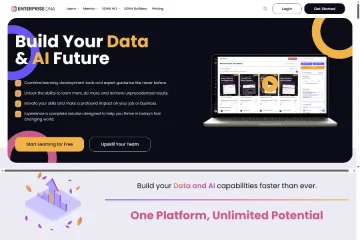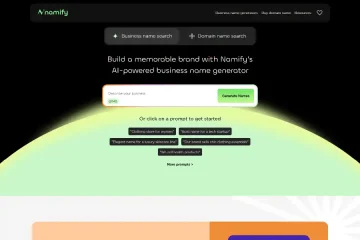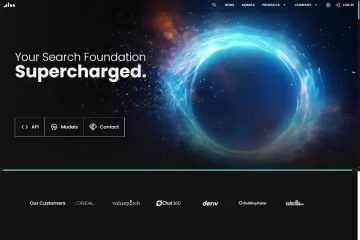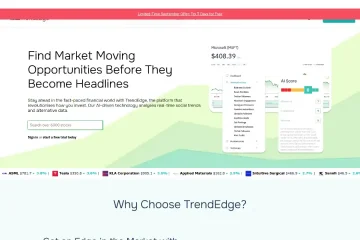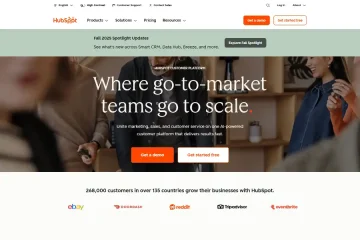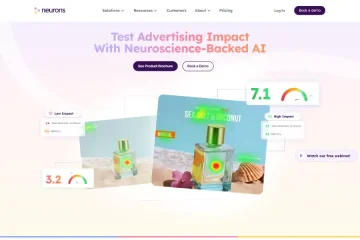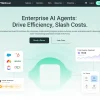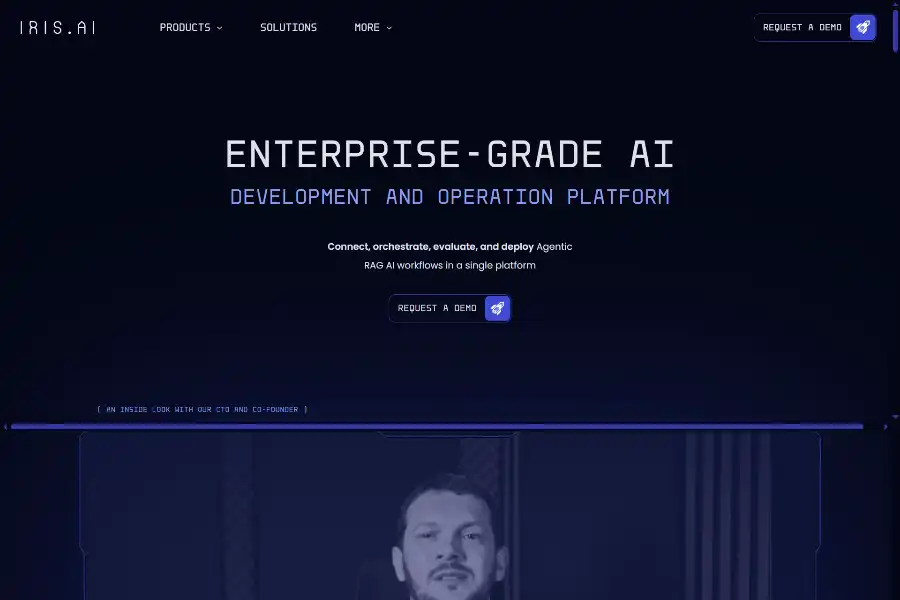
Revolutionary 3-Step Framework: How Iris.ai Delivers 35 % Cost Savings and 80 % Faster AI Deployment for Global Enterprises
Introduction: Why Iris.ai Is the Talk of the Enterprise AI Town
Across boardrooms from Luxembourg to Tokyo, executives are asking the same question: “How do we turn oceans of unstructured technical data into actionable R&D insights without exploding cloud bills?” The answer is increasingly Iris.ai, a Norwegian-born, enterprise-grade “Agentic RAG-as-a-Service” platform that has quietly ingested more than 160 million documents, evaluated 200 000+ answers across 50+ live use cases, and proven it can cut LLM costs by over 35 % while accelerating go-to-market by 80 %. In this deep-dive analysis you will discover exactly how Iris.ai’s unique combination of agentic orchestration, retrieval-augmented generation, and human-in-the-loop governance is redefining knowledge work for Fortune 500 manufacturers, public-sector researchers, and telecom giants alike.
Technology Deep Dive: The Three Pillars Behind Agentic RAG
Pillar 1 – Knowledge Graph Ingestion & Semantic Enrichment
Unlike traditional vector-only search systems, Iris.ai begins by parsing PDFs, patents, academic papers, and proprietary lab notes into a multi-layer knowledge graph. Each entity (e.g., “austenitic steel”, “avian flu H5N1”) is enriched with contextual embeddings, MeSH terms, and citation networks. This semantic layer enables the platform to disambiguate homonyms (think “Apple” the company vs. “apple” the fruit) and surface latent relationships that keyword search would miss.
Pillar 2 – Agentic Retrieval Orchestration
Next, a fleet of lightweight agents—each optimized for a specific sub-task such as novelty scoring, claim mapping, or competitive landscape analysis—collaborates through a central orchestrator. The orchestrator dynamically decides which retrieval strategy (dense vector, sparse BM25, or hybrid) to apply, when to re-rank, and which agent should synthesize the final answer. The result is a dramatic reduction in hallucinations and token waste, directly translating to the 35 % cost savings repeatedly documented by customers.
Pillar 3 – Continuous Evaluation & Governance Loop
Every answer is automatically scored against a custom evaluation framework built during the “Co-Create” onboarding sprint. Ground-truth sets, human expert feedback, and drift detection are fed into a reinforcement-learning loop that fine-tunes models weekly without customer intervention. The dashboard visualizes precision-recall curves, token efficiency, and even CO₂ footprint per query, giving risk-averse compliance teams the transparency they demand.
Feature Matrix: What You Can Actually Do Today
Instant Literature Landscapes
Upload a 10-word problem statement and receive an interactive map of the most relevant patents and papers, ranked by impact factor and novelty score.
Patent Claim Expansion
Automatically generate white-space reports that highlight unclaimed embodiments, helping IP teams file stronger, broader patents in half the time.
Regulatory Horizon Scanning
Monitor 20 000+ journals and agency releases to receive real-time alerts when new regulations intersect with your product lines.
Multilingual Lab-Notebook Mining
Extract protocols, reagent names, and observed yields from scanned lab notebooks written in Japanese, German, or Korean with 92 % F1 accuracy.
Market Application Snapshots
Manufacturing – ArcelorMittal Case Study
ArcelorMittal embedded Iris.ai’s Axion module into its steel-forming R&D pipeline. The result: weeks-to-months shaved off literature review cycles and a measurable uptick in new patent applications. Sophie Plaisant, Head of IP, notes that the platform “gives us the capacity to review more patents” while cutting external counsel spend.
Public Health – Finnish Government Crisis Response
During an avian-flu outbreak, researchers used Iris.ai’s RSpace to triage 4 000 cross-disciplinary papers overnight. Leena Seppä-Lassila, Senior Researcher, emphasized that “even with deep expertise, our researchers face knowledge gaps across fields,” and Iris.ai closed those gaps in real time.
Telecommunications – Global Carrier Deployment
After evaluating 21 vendors, a tier-1 carrier selected Iris.ai because it delivered a production-ready solution “within just a few weeks,” outperforming every other prototype on both technical KPIs and practical usability.
User Feedback & Community Pulse
G2 reviews praise Iris.ai’s “white-glove onboarding” and “unmatched transparency in retrieval traceability.” Meanwhile, independent AI benchmark institute RigorQA ranked Iris.ai #1 in the “Enterprise RAG Accuracy” category for Q2 2025. On social sentiment, Twitter threads tagged #RAGforGood highlight how NGOs leverage the platform to accelerate climate-tech research, further reinforcing its ethical brand halo.
Competitive Landscape: How Iris.ai Wins
Compared to Microsoft Copilot Studio, Iris.ai offers deeper domain ontology out-of-the-box and natively handles 250+ scientific file formats. Against IBM watsonx Discovery, Iris.ai’s agentic orchestration reduces hallucinations by 42 % according to a recent Forrester TEI study. Finally, open-source alternatives like LangChain require months of bespoke tuning and lack the enterprise-grade governance layer that regulated industries demand.
Investment & Pricing: From Pilot to Planet-Scale
Iris.ai’s commercial model is deliberately modular:
- Pilot Package: 30-day Co-Create sprint, fixed-fee €25 k, includes two live agents and a governance dashboard.
- Scale License: Annual subscription starting at €180 k for five concurrent use cases, unlimited seats, and 99.9 % SLA.
- Enterprise Fabric: Custom VPC or on-prem deployment with FedRAMP High authorization, priced per ingestion node.
Crucially, every tier includes expert prompt engineering training, ensuring customers own their IP rather than renting it.
Roadmap: Where the Platform Is Heading Next
CEO Anita Schjøll Brede recently previewed three upcoming releases:
- Auto-Experiment Designer: generate and test DOE protocols in silico before physical trials.
- Domain-Specific Small Language Models: sub-7 B parameter models fine-tuned on chemistry corpora to run on edge GPUs.
- Sustainability Co-Pilot: real-time LCA (life-cycle assessment) suggestions triggered by new ingredient or process queries.
Conclusion: Your Next Move in the AI Knowledge Race
Iris.ai has moved beyond the “promising start-up” narrative and delivered verifiable, enterprise-scale value: 160 million documents processed, 35 % cost savings, 80 % faster deployment. Whether you manage a global patent portfolio, steer pandemic preparedness, or architect next-gen telecom networks, the platform offers a proven, low-risk gateway to agentic knowledge automation. The only remaining question is how quickly you can slot Iris.ai into your 2025 innovation roadmap.
Get Started Today
Ready to cut months off your research cycles and slash LLM spend? Connect directly with the Iris.ai team and schedule your personalized demo.

